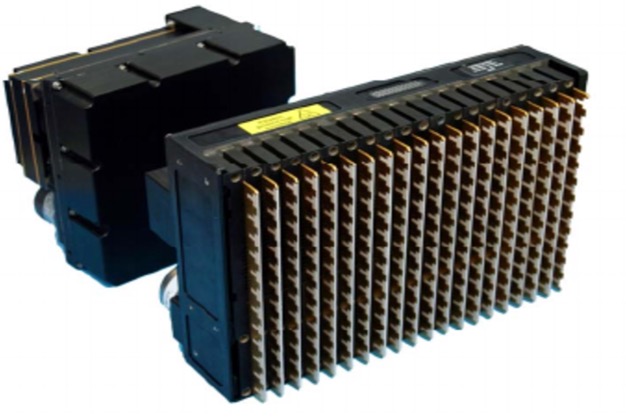Small Tactical Multi-Payload Aerostat System (STMPAS) Delivery
STMPAS consists of several optional ISR payloads attached under a small specially designed tethered blimp, called a Helikite, and a trailer Carrier that stores the Helikite and the required winch, sensors and helium tanks. The STMPAS blimp can fly at 1000 feet for low cost, long term coverage for 24 hours a day for a week or more without maintenance or downtime. It operates for weeks at a time at a fraction of the cost of comparable aircraft or Unmanned Air Vehicles. STMPAS prototypes were tested by GTRI and the Army at Fort Huachuca and Fort Benning early in 2012. REF procured six Rev-1 STMPAS, with modifications from the prototype testing, for operational deployment to Afghanistan.
Carolina Unmanned Vehicles, Inc. (CUV) announces the delivery of the Rev-1 version of the Small Tactical Multi-Payload Aerostat System (STMPAS), for deployment to Afghanistan. STMPAS combines the ground and airborne hardware from CUV and payloads developed by Georgia Tech Research Institute (GTRI) for the Army Rapid Equipping Force (REF). CUV provided the aerostats and all ground operating equipment and GTRI developed the payloads. It will provide Intelligence, Surveillance, and Reconnaissance (ISR) capability for small tactical units in Afghanistan and other locations.
The mission of the REF is to equip operational commanders employed globally with commercial-off-the-shelf and government-off-the-shelf solutions to increase effectiveness and reduce risk, insert future force technologies and surrogates to validate concepts and speed capabilities to the Soldiers and assess Army business practices, desired capabilities, and acquisition techniques to effect institutional Army change.
Traditional aerostats cannot operate in high winds unless fairly large, typically with 200 Lb of lift or more. This large size makes them unsuitable for deployment to small isolated bases. STMPAS uses the patented Helikite lifting aerostat from Allsopp Helikites of Great Britain. Helikites have lifting surfaces that generate aerodynamic lift to support the blimp in winds which would drive traditional designs into the ground. With the Helikite, STMPAS can be smaller and more mobile than traditional aerostat systems yet still operate in high winds. With superior mobility, mission utility and adverse weather capability, all STMPAS equipment can fit into a single military trailer. STMPAS is designed to support mobile or expeditionary operations, but may be employed in a static configuration. This employment may be useful, for example, as a force protection measure at a small Forward Operating Base (FOB) that cannot meet the logistic requirements of a larger aerostat system.
STMPAS is suitable for surveillance, communications relay and research for DOD and Homeland Security missions. CUV is a small Woman-Owned company focused on small aerostats and Unmanned Aerial Vehicles, and has previously provided aerostat systems for the USAF, Sandia National Laboratory, and Lockheed Martin.
Source : Carolina Unmanned Vehicles


